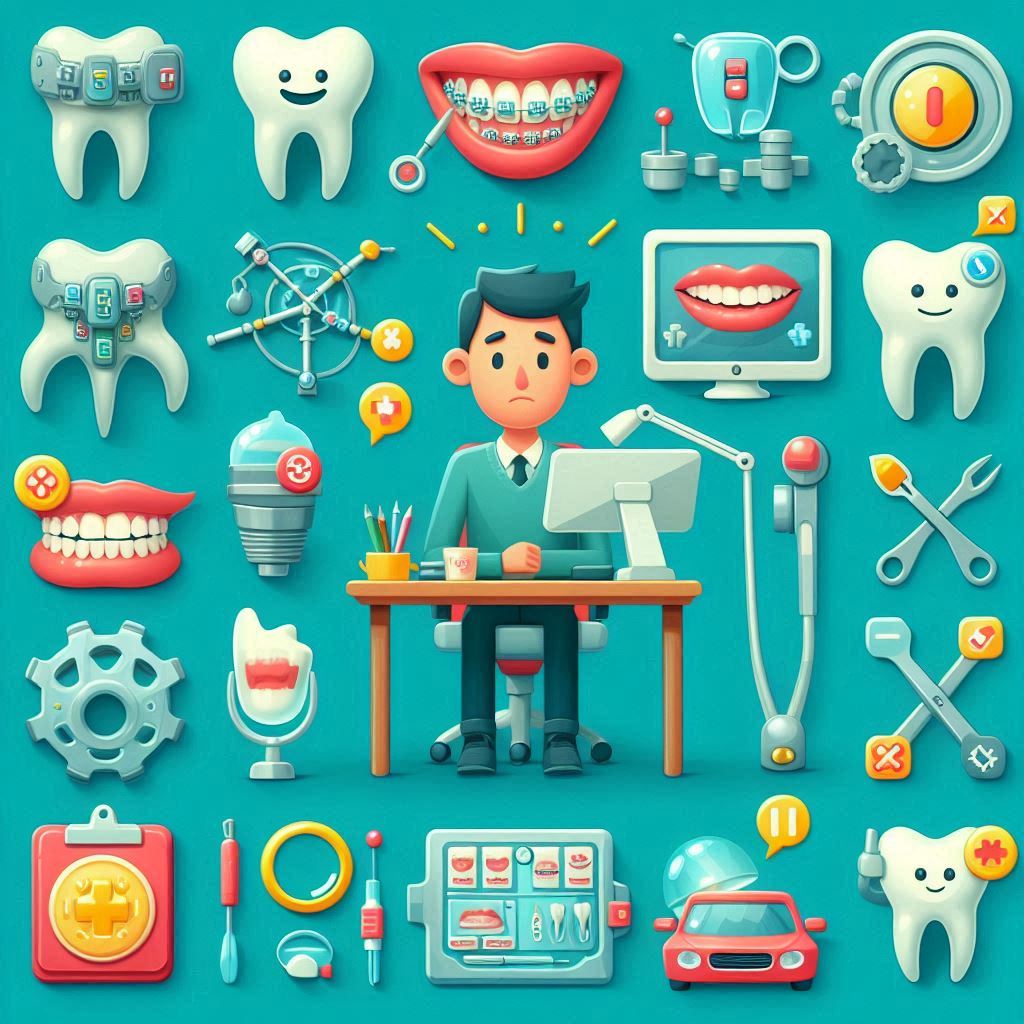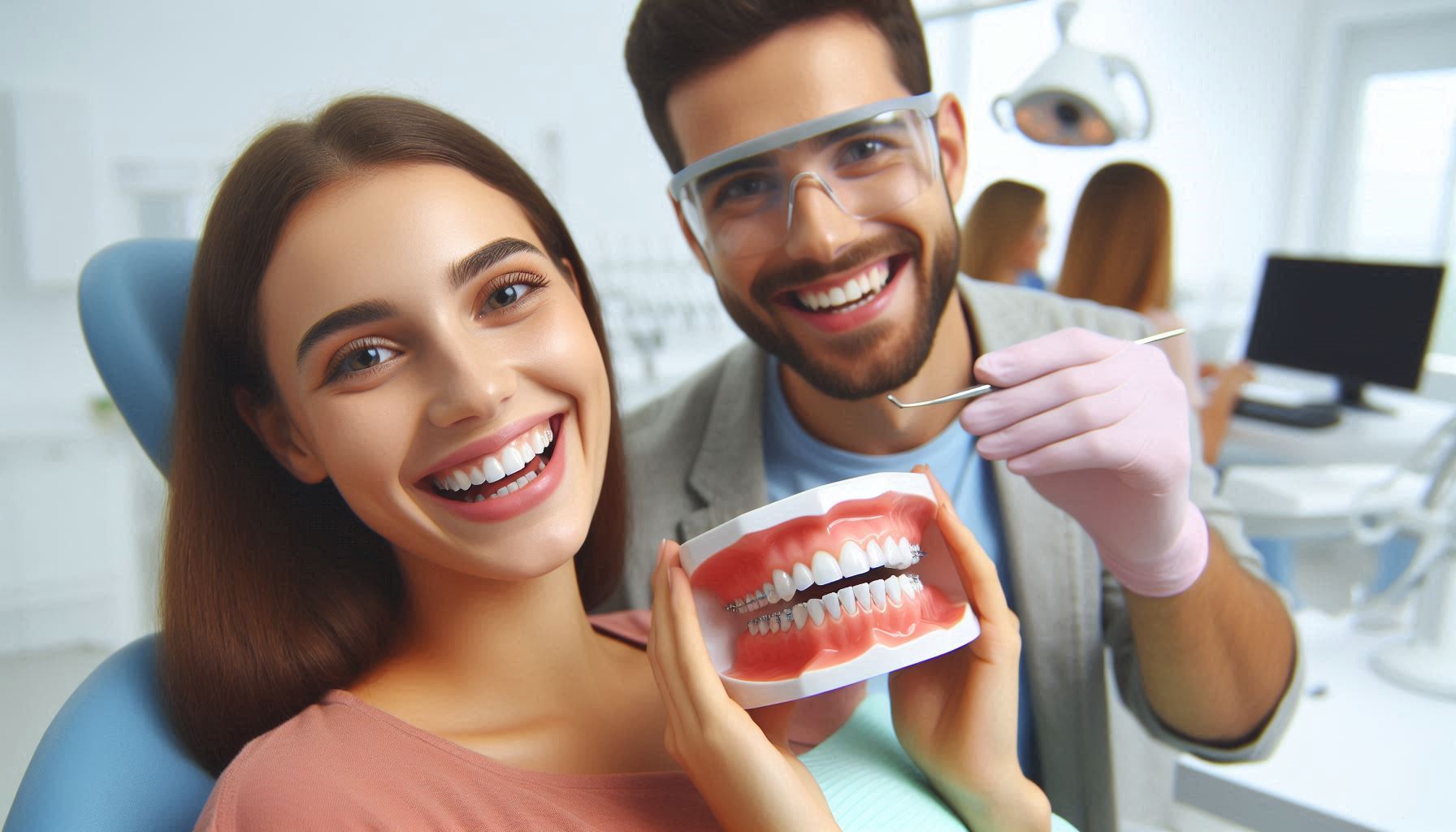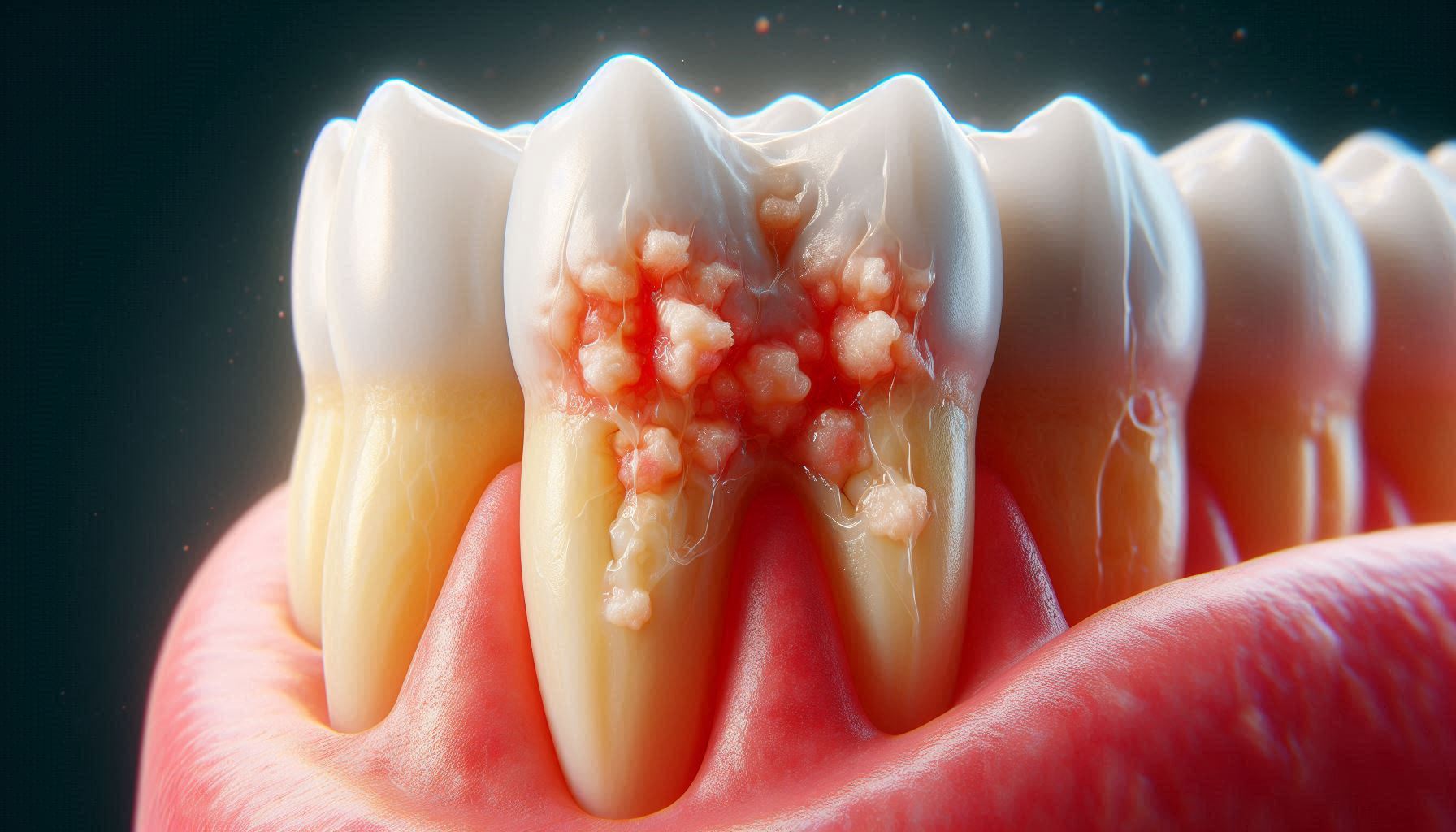Orthodontic treatment is an investment in your smile, but it’s not without its challenges. Whether you are undergoing traditional braces treatment or using clear aligners like Invisalign, dental emergencies can arise at any time. From discomfort to broken brackets, wires, and aligners, handling these emergencies properly can ensure that your treatment progresses smoothly, minimizing delays and complications.
This guide will provide an in-depth overview of common orthodontic emergencies, how to address them, when to contact your orthodontist, and steps to prevent future issues.
What Constitutes an Orthodontic Emergency?
Orthodontic emergencies are situations in which the braces or aligners are causing pain, discomfort, or complications that interfere with the progress of your treatment. While some issues can wait for the next scheduled appointment, others may require immediate attention. Emergencies range from minor irritations to significant damage that can delay treatment or cause injury to the mouth.
Types of Orthodontic Emergencies
Below are some common orthodontic issues that may be considered emergencies. Understanding the difference between a minor inconvenience and an emergency is crucial to determine whether or not you need to seek immediate professional care.
Broken Brackets or Bands
- Cause: Brackets or bands may come loose due to eating hard foods, a fall, or direct impact.
- Solution: If the bracket is still attached to the wire, it can often be left in place and monitored. However, if it’s completely detached, you may need to carefully place it in a safe spot and contact your orthodontist. In some cases, the orthodontist may recommend securing it with orthodontic wax to avoid irritation until the next appointment.
Dislodged or Poking Wires
- Cause: Wires may move out of place due to a loosened bracket or as part of natural treatment progress. If a wire is poking into the soft tissue of the gums or cheeks, it can cause significant pain.
- Solution: Use a pencil eraser or a cotton swab to gently move the wire back into place. If that’s not possible, use orthodontic wax to cover the sharp end. In some cases, cutting the wire with sterilized scissors may be necessary if the discomfort is severe. Always contact your orthodontist to discuss the best course of action.
Loose or Lost Retainers
- Cause: Retainers can become lost or damaged from improper storage, accidents, or wear and tear.
- Solution: A lost or damaged retainer should be replaced as soon as possible. Wearing a retainer is essential to prevent teeth from shifting back to their original position. Contact your orthodontist to schedule a replacement.
Soreness or Irritation
- Cause: After adjusting the braces or when starting a new set of aligners, some soreness or irritation to the mouth is common. This can be exacerbated by rough edges or protruding wires.
- Solution: This type of discomfort can usually be alleviated with over-the-counter pain relievers, saltwater rinses, or applying orthodontic wax to irritated areas. If pain persists for more than a few days or becomes unbearable, contact your orthodontist.
Broken Aligners (Invisalign)
- Cause: Clear aligners are generally more fragile than traditional braces and can crack or break due to misuse, accidents, or improper handling.
- Solution: If an aligner cracks or breaks, do not attempt to repair it yourself. Contact your orthodontist immediately. Depending on the situation, they may recommend wearing the previous aligner set until a new one arrives or may provide a replacement.
What to Do in Case of Orthodontic Emergencies
It’s important to stay calm and handle emergencies with care to prevent further damage and alleviate discomfort. Below are some detailed steps for managing common orthodontic emergencies.
Managing Broken Brackets or Bands
If a bracket or band has come loose, follow these steps:
- Check for looseness: See if the bracket is still attached to the wire. If it is, leave it in place and avoid touching it too much.
- Apply orthodontic wax: If the bracket is rubbing against the inside of your mouth and causing irritation, apply orthodontic wax to the offending bracket to protect your gums.
- Secure the bracket: If it’s completely loose, remove it carefully and store it in a small container until you can get to your orthodontist. They will usually want to replace it as soon as possible to keep your treatment on track.
Dealing with a Poking Wire
A poking wire can be one of the more uncomfortable orthodontic emergencies. Here’s how to manage it:
- Use the wax: Apply a small ball of orthodontic wax to the end of the wire. This will temporarily prevent it from poking the inside of your mouth.
- Use a cotton swab or pencil eraser: If the wire is slightly out of place, gently push it back into position using a pencil eraser or a cotton swab.
- Cutting the wire: If the wire is severely poking into your gums, use sterilized scissors to cut the wire as close to the bracket as possible. This is a temporary solution, and you should contact your orthodontist for further care.
Dealing with a Sore Mouth
Pain and soreness after an adjustment or when starting a new aligner tray are common. Here’s what you can do:
- Over-the-counter pain relief: Take ibuprofen or acetaminophen as directed to alleviate discomfort.
- Saltwater rinse: Dissolve a teaspoon of salt in warm water and swish it around in your mouth to reduce inflammation and soothe sore gums.
- Orthodontic wax: Apply wax to areas where your braces are causing irritation or soreness.
Handling Loose or Lost Retainers
If you lose or break your retainer, you should:
- Contact your orthodontist immediately: They can help you figure out what to do next.
- Wear your previous retainer: If it’s a clear retainer and still in good condition, continue wearing it until your orthodontist provides a replacement.
- Avoid shifting teeth: Without a retainer, your teeth may shift back, so getting a replacement promptly is important.
Broken Aligners (Invisalign)
When an aligner cracks or breaks, you should:
- Contact your orthodontist right away: Let them know about the damage, and they will provide a solution.
- Wear the previous aligner set: In some cases, your orthodontist may instruct you to wear the previous set until a new one arrives.
- Handle with care: Aligners can be fragile, so always follow your orthodontist’s advice on how to properly handle and care for them.
When to Contact Your Orthodontist
While minor issues like soreness or slight irritation can usually be managed at home, there are situations where you should immediately contact your orthodontist:
- Severe pain: If you experience significant pain that doesn’t go away with over-the-counter remedies, or if you develop an infection in the mouth due to an orthodontic appliance, seek immediate attention.
- Loose or broken brackets: These should be addressed as soon as possible to avoid delays in your treatment.
- Broken or lost retainers: Missing retainers should be replaced quickly to avoid the risk of your teeth shifting out of alignment.
- Broken aligners: If you’re using clear aligners and one is cracked or damaged, you’ll need a replacement to ensure continued progress.
How to Prevent Orthodontic Emergencies
While orthodontic emergencies can’t always be avoided, there are steps you can take to reduce their likelihood.
- Be Mindful of What You Eat: If you have braces, avoid hard, sticky, or chewy foods that can cause brackets to break or wires to shift. Cut food into smaller pieces to make it easier on your appliances.
- Follow Care Instructions: Always follow the care instructions your orthodontist gives you. For example, make sure to wear your aligners for the recommended number of hours each day and never remove them unless necessary.
- Maintain Regular Check-Ups: Regular visits to your orthodontist are essential for monitoring the progress of your treatment. During these appointments, your orthodontist can adjust your appliances and address any potential issues before they become emergencies.
- Practice Good Oral Hygiene: Maintaining excellent oral hygiene is crucial to avoid issues like plaque buildup, which can lead to discomfort or even tooth decay.
Special Considerations for Braces and Aligners
Different types of orthodontic appliances require different care and troubleshooting techniques. While the emergencies for traditional braces and clear aligners can overlap, there are a few unique situations and tips specific to each.
Braces-Specific Emergencies
- Loose or Bent Archwires:
- Archwires are the thin, metal wires that connect the brackets. If a wire becomes loose or bent, it can cause irritation and delay your treatment.
- Solution: If the wire is slightly bent but still attached to the brackets, you can attempt to gently reposition it using a pair of sterilized tweezers. If the wire is completely loose, try to secure it with orthodontic wax to avoid discomfort. In severe cases, contact your orthodontist for an adjustment.
- Bracket or Band Breakage:
- Bands, especially molar bands, are typically cemented around the back teeth. If one comes loose or breaks, it can affect the effectiveness of your treatment.
- Solution: It is crucial that broken bands be replaced as soon as possible. In this case, do not try to replace it on your own. Your orthodontist will need to properly reattach the band or replace the bracket to ensure your treatment stays on track.
- Rubber Band Issues:
- If you use rubber bands (elastics) for certain bite corrections, they may break or get lost.
- Solution: Keep spare rubber bands with you and replace them promptly if they break. Make sure to wear them as directed, as missing rubber bands can delay progress. If your rubber bands consistently break or don’t stay in place, contact your orthodontist for an adjustment.
Aligners-Specific Emergencies
- Lost or Broken Aligners:
- As aligners are custom-made for each stage of treatment, they can become cracked, lost, or misplaced.
- Solution: If an aligner cracks, use your previous set until a new one is issued. Do not continue wearing a broken aligner as it could cause discomfort or improper movement. To avoid misplacement, always store your aligners in their case when they’re not in use, and never leave them exposed to hot temperatures.
- Pain or Soreness from New Aligners:
- It’s common to experience discomfort during the first few days of wearing a new aligner.
- Solution: Over-the-counter pain relievers like ibuprofen can help reduce discomfort. You can also use a warm saltwater rinse or ice packs to soothe your gums. If pain lasts more than a few days or is intense, contact your orthodontist, as this could indicate a problem with the aligner fit.
- Aligner Staining or Discoloration:
- Aligners can stain if you drink coffee, tea, or consume other pigmented foods while wearing them.
- Solution: Always remove your aligners when eating or drinking anything other than water. Brush your aligners with a soft toothbrush (without toothpaste) and rinse them regularly to avoid staining. If they discolor, speak with your orthodontist about potential cleaning solutions or replacements.
How to Handle Orthodontic Emergencies in Children and Adolescents
Children and teenagers are often the primary recipients of orthodontic treatment, and they may experience different types of emergencies due to their active lifestyles and evolving mouths. For parents and guardians, it’s important to teach children how to take care of their appliances and manage discomfort. Here are a few considerations for orthodontic emergencies in younger patients:
Common Issues for Children with Braces
- Loose or Broken Brackets: Children are often more active in sports, which can lead to accidental impacts that break brackets or dislodge wires.
- Solution: Always check for loose brackets or wires after activities, especially if your child plays contact sports. A sports mouthguard can provide added protection.
- Falling or Biting into Hard Foods: If your child falls or bites into something too hard, it can cause the appliance to shift or become damaged.
- Solution: Limit sticky, chewy, or hard foods that can lead to broken braces or discomfort.
Teach Proper Care and Handling
- Regular Monitoring: Ensure your child understands how to properly wear and care for their braces. For example, they should avoid chewing on pens, pencils, or fingernails, which could damage the braces.
- Pain Management: Teach your child how to use wax, rinse with saltwater, and take pain relievers appropriately to manage any soreness after adjustments.
Emotional Support
- Social and Emotional Impact: Some children may struggle with the discomfort or the way they look while wearing braces. Keep communication open with your child to ensure they feel comfortable and confident throughout their treatment.
- Solution: Provide emotional support and offer solutions to help with any discomfort, such as using fun-colored wax or customizing the braces with fun rubber band designs to make the process feel less intimidating.
Preventing Orthodontic Emergencies: Tips for Maintaining Braces and Aligners
Maintain Regular Dental Check-ups
- Visit your orthodontist regularly for adjustments and to monitor the progress of your treatment. Preventive care ensures that any small problems are addressed before they turn into larger emergencies.
- Regular visits also allow the orthodontist to check for signs of wear and tear or other issues with your braces or aligners.
Avoid Foods That Can Damage Your Appliances
- For Braces: Avoid foods like sticky candies, popcorn, nuts, hard crusts, and chewy foods that can damage wires, brackets, or cause discomfort.
- For Aligners: Avoid drinking beverages like coffee, tea, and soda while wearing aligners, as these can stain or warp the material. Always remove aligners when eating or drinking anything other than water.
Follow Proper Oral Hygiene
- For Braces: Be meticulous with brushing and flossing to prevent plaque buildup, which can irritate the gums and cause further discomfort. A water flosser may be particularly helpful in cleaning around braces.
- For Aligners: Clean aligners with a soft toothbrush and avoid using toothpaste, which can cause scratches and dull the appearance of the trays.
Wear a Mouthguard for Sports
- If you play sports, especially contact sports, wear a mouthguard to protect your braces and teeth from trauma. Even if you’re using aligners, a mouthguard can protect your teeth and aligners from any accidental impacts.
Follow the Orthodontist’s Instructions Carefully
- Whether you have braces or aligners, following your orthodontist’s instructions is key to preventing emergencies. Make sure to wear any elastics, rubber bands, or retainers exactly as prescribed. Disregarding instructions can delay treatment or lead to other problems.
When to Seek Immediate Professional Help
While many orthodontic problems can be managed at home, certain emergencies require immediate attention from your orthodontist. You should seek help if:
- Intense pain that cannot be alleviated with over-the-counter medications.
- Infections or swelling in the mouth or gums around the braces or aligners.
- Broken appliances that cannot be temporarily managed (for example, a completely detached band or a cracked aligner that can’t be replaced with an old set).
- Difficulty in chewing or closing your mouth properly due to appliance malfunction.
Conclusion
Orthodontic treatment is a journey, and while emergencies can be frustrating, they are often manageable with prompt action and communication with your orthodontist. Understanding common issues, how to handle them, and when to seek professional care ensures that your treatment stays on track. Remember that while emergencies can happen, they don’t necessarily mean your treatment will be delayed — taking the right steps early on can prevent further damage and discomfort.
Taking care of your braces or aligners is essential for achieving the best results in the shortest time possible. Follow your orthodontist’s advice, maintain good oral hygiene, and be mindful of potential issues to ensure that your orthodontic treatment is as smooth and effective as possible. By staying proactive, you can confidently face any minor discomforts or emergencies that come your way and stay on the path to a beautiful, healthy smile.
SOURCES
Barrett, S. R. & Stewart, J. H. (2018). Orthodontic emergencies: A clinical guide for practitioners. Journal of Orthodontic Care, 15(3), 122-136.
Benson, K. L. & Walker, P. S. (2019). Managing discomfort during orthodontic treatment: A focus on pain management strategies. Journal of Clinical Orthodontics, 53(6), 434-441.
Cohen, B. E. & Larson, A. D. (2017). Common orthodontic issues and their solutions. Orthodontic Topics, 28(4), 221-230.
Ferguson, L. M. & Carson, J. D. (2020). Braces and beyond: The importance of timely care during orthodontic emergencies. The Journal of Orthodontic Health, 31(5), 200-210.
Griffin, M. H. & Harrison, A. P. (2021). Managing orthodontic emergencies in pediatric patients: A step-by-step approach. Pediatric Dentistry Today, 42(2), 110-120.
Miller, L. R. & Tanaka, M. H. (2015). Orthodontic appliance troubleshooting: A guide for everyday issues. The International Journal of Orthodontics, 39(7), 406-412.
Smith, K. D. & Jones, R. A. (2016). Preventing orthodontic emergencies through patient education. Journal of Dental Education, 80(3), 195-203.
Thompson, J. R. & Richards, E. C. (2019). Aligner therapy and troubleshooting: How to handle breaks and discomfort in clear aligners. American Journal of Orthodontics, 45(8), 522-533.
Williams, S. D. & Brown, R. A. (2018). Orthodontic wax and its role in preventing appliance-related injuries. Orthodontic Materials Review, 22(9), 123-130.
HISTORY
Current Version
February 14, 2025
Written By:
SUMMIYAH MAHMOOD




